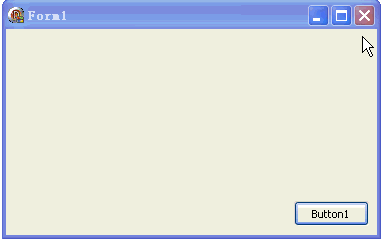多线程编程(18) - 再从一个小例子出发
来源:互联网 发布:linux 建立文件夹 编辑:程序博客网 时间:2024/04/30 20:49
前面的例子都是让若干线程做同样的事情, 下面这个例子中的三个线程将分别在三个画板上随机画不同颜色的椭圆.
接下来的很多事情我想要基于这个例子来做.
本例效果图:
代码文件:
unit Unit1;interfaceuses Windows, Messages, SysUtils, Variants, Classes, Graphics, Controls, Forms, Dialogs, StdCtrls, ExtCtrls;type TForm1 = class(TForm) PaintBox1: TPaintBox; PaintBox2: TPaintBox; PaintBox3: TPaintBox; Button1: TButton; procedure Button1Click(Sender: TObject); procedure FormDestroy(Sender: TObject); end;var Form1: TForm1;implementation{$R *.dfm}var h1,h2,h3: THandle;{第一个线程的入口函数: 画红色椭圆}function ThreadFun1(p: Pointer): Integer; stdcall;var i, x1,y1,x2,y2: Integer;begin Form1.PaintBox1.Canvas.Brush.Color := clRed; for i := 0 to 50000 do with Form1.PaintBox1 do begin x1 := Random(Width); y1 := Random(Height); x2 := Random(Width); y2 := Random(Height); Canvas.Lock; Canvas.Ellipse(x1,y1,x2,y2); Canvas.Unlock; Sleep(0); end; Result := 0;end;{第二个线程的入口函数: 画绿色椭圆}function ThreadFun2(p: Pointer): Integer; stdcall;var i, x1,y1,x2,y2: Integer;begin Form1.PaintBox2.Canvas.Brush.Color := clGreen; for i := 0 to 50000 do with Form1.PaintBox2 do begin x1 := Random(Width); y1 := Random(Height); x2 := Random(Width); y2 := Random(Height); Canvas.Lock; Canvas.Ellipse(x1,y1,x2,y2); Canvas.Unlock; Sleep(0); end; Result := 0;end;{第三个线程的入口函数: 画蓝色椭圆}function ThreadFun3(p: Pointer): Integer; stdcall;var i, x1,y1,x2,y2: Integer;begin Form1.PaintBox3.Canvas.Brush.Color := clBlue; for i := 0 to 50000 do with Form1.PaintBox3 do begin x1 := Random(Width); y1 := Random(Height); x2 := Random(Width); y2 := Random(Height); Canvas.Lock; Canvas.Ellipse(x1,y1,x2,y2); Canvas.Unlock; Sleep(0); end; Result := 0;end;procedure TForm1.Button1Click(Sender: TObject);var ID: DWORD;begin h1 := CreateThread(nil, 0, @ThreadFun1, nil, 0, ID); h2 := CreateThread(nil, 0, @ThreadFun2, nil, 0, ID); h3 := CreateThread(nil, 0, @ThreadFun3, nil, 0, ID);end;procedure TForm1.FormDestroy(Sender: TObject);begin CloseHandle(h1); CloseHandle(h2); CloseHandle(h3);end;end.
窗体文件:
object Form1: TForm1 Left = 0 Top = 0 Caption = 'Form1' ClientHeight = 206 ClientWidth = 371 Color = clBtnFace Font.Charset = DEFAULT_CHARSET Font.Color = clWindowText Font.Height = -11 Font.Name = 'Tahoma' Font.Style = [] OldCreateOrder = False OnDestroy = FormDestroy PixelsPerInch = 96 TextHeight = 13 object PaintBox1: TPaintBox Left = 8 Top = 8 Width = 114 Height = 153 end object PaintBox2: TPaintBox Left = 128 Top = 8 Width = 114 Height = 153 end object PaintBox3: TPaintBox Left = 248 Top = 8 Width = 114 Height = 153 end object Button1: TButton Left = 288 Top = 172 Width = 75 Height = 25 Caption = 'Button1' TabOrder = 0 OnClick = Button1Click endend
可以借助入口函数的参数, 把这个程序简化一下(窗体和运行效果不变):
unit Unit1;interfaceuses Windows, Messages, SysUtils, Variants, Classes, Graphics, Controls, Forms, Dialogs, StdCtrls, ExtCtrls;type TForm1 = class(TForm) PaintBox1: TPaintBox; PaintBox2: TPaintBox; PaintBox3: TPaintBox; Button1: TButton; procedure Button1Click(Sender: TObject); procedure FormDestroy(Sender: TObject); end;var Form1: TForm1;implementation{$R *.dfm}var h1,h2,h3: THandle;{线程的入口函数: 不同的线程画不同颜色的椭圆}function ThreadFun(p: Pointer): Integer; stdcall;var i,x1,y1,x2,y2: Integer; paint: TPaintBox;begin case Integer(p) of 1: begin paint := Form1.PaintBox1; paint.Canvas.Brush.Color := clRed; end; 2: begin paint := Form1.PaintBox2; paint.Canvas.Brush.Color := clGreen end; 3: begin paint := Form1.PaintBox3; paint.Canvas.Brush.Color := clBlue; end; end; for i := 0 to 5000 do with paint do begin x1 := Random(Width); y1 := Random(Height); x2 := Random(Width); y2 := Random(Height); Canvas.Lock; Canvas.Ellipse(x1,y1,x2,y2); Canvas.Unlock; Sleep(0); end; Result := 0;end;procedure TForm1.Button1Click(Sender: TObject);var ID: DWORD;begin h1 := CreateThread(nil, 0, @ThreadFun, Ptr(1), 0, ID); h2 := CreateThread(nil, 0, @ThreadFun, Ptr(2), 0, ID); h3 := CreateThread(nil, 0, @ThreadFun, Ptr(3), 0, ID);end;procedure TForm1.FormDestroy(Sender: TObject);begin CloseHandle(h1); CloseHandle(h2); CloseHandle(h3);end;end.
多用点数组, 再简化一下(窗体与效果一样):
unit Unit1;interfaceuses Windows, Messages, SysUtils, Variants, Classes, Graphics, Controls, Forms, Dialogs, StdCtrls, ExtCtrls;type TForm1 = class(TForm) PaintBox1: TPaintBox; PaintBox2: TPaintBox; PaintBox3: TPaintBox; Button1: TButton; procedure Button1Click(Sender: TObject); procedure FormDestroy(Sender: TObject); end;var Form1: TForm1;implementation{$R *.dfm}const colors: array[0..2] of TColor = (clRed, clGreen, clBlue);var hArr: array[0..2] of THandle; panitArr: array[0..2] of TPaintBox;function ThreadFun(p: Pointer): Integer; stdcall;var i,n,x1,y1,x2,y2: Integer;begin n := Integer(p); panitArr[n].Color := colors[n]; for i := 0 to 5000 do with panitArr[n] do begin x1 := Random(Width); y1 := Random(Height); x2 := Random(Width); y2 := Random(Height); Canvas.Lock; Canvas.Ellipse(x1,y1,x2,y2); Canvas.Unlock; Sleep(0); end; Result := 0;end;procedure TForm1.Button1Click(Sender: TObject);var ID: DWORD; i: Integer;begin panitArr[0] := PaintBox1; panitArr[1] := PaintBox2; panitArr[2] := PaintBox3; for i := 0 to Length(hArr) - 1 do hArr[i] := CreateThread(nil, 0, @ThreadFun, Ptr(i), 0, ID);end;procedure TForm1.FormDestroy(Sender: TObject);var i: Integer;begin for i := 0 to Length(hArr) - 1 do CloseHandle(hArr[i]);end;end.
- 多线程编程(18) - 再从一个小例子出发
- 一个多线程的小例子---C#高级编程学习
- 多线程的一个小例子
- 从自身出发去编程
- Linux多线程的一个小例子
- 基本多线程编程的一个例子
- python 多线程编程(一个经典例子)
- 高级Bash脚本编程指南(1):从一个简单的script出发
- Windows内核编程的一个小例子
- 面向接口编程的一个小例子
- TCP编程的一个小例子
- 一个小例子看编程的扩展性
- TCP编程的一个小例子
- 从一个页面出发获取指定关键字
- linux下的C语言多线程编程小例子
- 关于多线程中回调函数的一个小例子
- 关于多线程中代理的一个小例子
- 关于多线程中异步代理的一个小例子
- 动态SQL语句
- 用C++实现属性
- key-value数据库的一种实现
- mplayer命令行模式下的使用方法
- 多线程编程(17) - 多线程同步之 WaitableTimer (等待定时器对象)[续三]
- 多线程编程(18) - 再从一个小例子出发
- TN017: Destroying Window Objects
- JavaScript调试技巧之:快速定位
- 多线程编程(19) - 不使用同步工具, 手动协调线程依次执行
- 非官方的 TWaitableTimer 类
- Java多线程学习笔记
- 创建无模式对话框
- 十一月二十一日记
- new delete和malloc free的用法与区别


